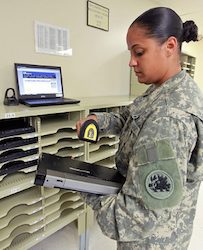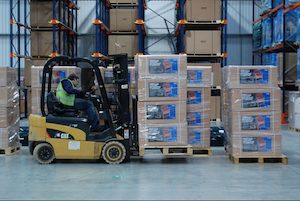What is Asset Tracking? Learn Why Asset Tracking is Important and How It Works


A Definition of Asset Tracking
Think about all of your physical assets. You may have more than you realized, and if you do, then you need to enhance your asset tracking practices. Asset tracking, sometimes referred to as asset management, is the method you use to track your physical assets, whether you scan barcode labels attached to them or you use GPS or RFID tags that broadcast their location. Asset tracking is just as important as managing your inventory, because you need to know the location, status, maintenance schedule, and other important information about your organization’s physical assets. Indeed, asset tracking is important to your organization’s bottom line and compliance, as you are responsible for locating and replacing lost or missing physical assets, as well as those that have come to the end of their lifecycle.
How Does It Work? Methods of Asset Tracking
 While asset tracking can be time consuming and expensive, there are methods of asset tracking that can save your organization time and money. The goal of any asset tracking system, therefore, is to maximize asset control efficiency and minimize equipment loss. Through the use of mobile computers, barcode labels, handheld barcode scanners, and asset management software, you can track your assets in real time, resulting in more efficient production planning and reduced downtime. The proper management software also enables organizations to schedule necessary maintenance or service, or even preventive maintenance. Complete asset tracking solutions include barcode technology, enabling organizations to scan their fixed assets to track them accurately and efficiently.
While asset tracking can be time consuming and expensive, there are methods of asset tracking that can save your organization time and money. The goal of any asset tracking system, therefore, is to maximize asset control efficiency and minimize equipment loss. Through the use of mobile computers, barcode labels, handheld barcode scanners, and asset management software, you can track your assets in real time, resulting in more efficient production planning and reduced downtime. The proper management software also enables organizations to schedule necessary maintenance or service, or even preventive maintenance. Complete asset tracking solutions include barcode technology, enabling organizations to scan their fixed assets to track them accurately and efficiently.
Barcodes are the standard for data collection and asset tracking, giving each asset a unique identifier so that they may be individually recognized and tracked. Barcodes include information that is critical to business, such as project name, asset category, and more. Barcode scanners read each barcode, allowing organizations to count assets more quickly and accurately without the risk of introducing human error.
Benefits of Asset Tracking
The benefits of asset tracking are numerous, and nearly all contribute to a healthier bottom line for the organizations that properly implement effective asset management processes. We highlight some of the most beneficial advantages of employing asset tracking here:

Our sales engineers are experts in automatic asset tracking, tagging and identification,a nd can answer all your questions. Get in touch now.
Lets Talk ›